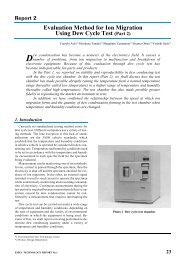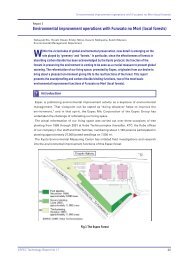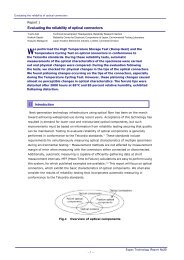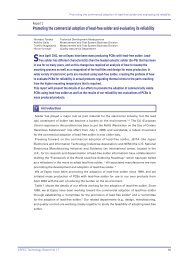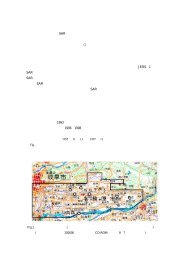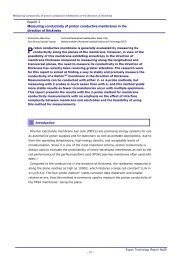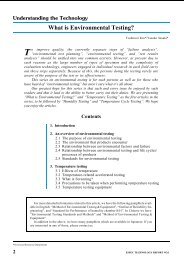download
download
download
Create successful ePaper yourself
Turn your PDF publications into a flip-book with our unique Google optimized e-Paper software.
Measuring Conductivity of Proton Conductive Membrane in the direction of thickness, partⅡ:<br />
using the 4-probe method in the direction of thickness<br />
Because of these problems, input/output O/L (overload) error messages of current and voltage<br />
in the electrochemical measurement device (Potentiostat/Galvanostat) are much more likely to<br />
occur when using the 4-probe method in the direction of thickness than in the in-plane direction.<br />
The difficulties in manufacturing and measuring MEA specimens have greatly hindered the<br />
application of the 4-probe method in the direction of thickness in real ion conductivity<br />
measurements. Furthermore, a defective MEA specimen produced by improper temperature and<br />
pressure conditions will also lead to some failures and debase the accuracy of the measurements.<br />
For example, diffuse and scattered points with a poor convergence domain are brought about on<br />
the Cole-Cole plot, and/or completely singular resistance measurements may be obtained.<br />
With the aim of overcoming the above failures and identifying the optimal specimen<br />
manufacturing conditions as well as conditions for accurately measuring proton conductivity in<br />
the direction of thickness of Nafion ® -like membranes, we at Espec have developed the 4-probe<br />
technique in the direction of thickness. This report will discuss some important factors affecting<br />
the measuring performance of the MEA specimen, including the arrangement between the<br />
electric potential sampling electrodes and the electric current lead-in membranes, materials of<br />
the wire and its coating used as electric potential sampling electrodes, and the forming condition<br />
of MEA specimens. In addition, this report will also present measurement results from this<br />
4-probe technique in the direction of thickness for Nafion117 ® membranes that underwent<br />
different temperature and pressure pretreatments.<br />
2<br />
Experimental method<br />
2-1 Equipment and materials<br />
Table 1 lists equipment and materials used in this research.<br />
Table 1 Equipment and materials<br />
Equipment/materials Manufacturer<br />
Ion exchange membrane<br />
Cu/polyester coated wire,<br />
wire diameter: φ0.1mm<br />
Pt/Teflon coated wire,<br />
wire diameter: φ0.076mm<br />
E. I. du Pont de Nemours and<br />
Company<br />
- 3 -<br />
Model/registered<br />
product name<br />
Nafion117 ®<br />
The Nilaco Corporation CU-116167<br />
The Nilaco Corporation PT-967353<br />
Pt wire, wire diameter:φ0.10mm The Nilaco Corporation PT-351165<br />
Insulating varnish The Nilaco Corporation Varnish, No. 7031<br />
Impedance gain/phase analyzer Solartron Instruments SI 1260<br />
Electrochemical interface Solartron Instruments SI 1287<br />
Temperature & humidity chamber Espec Corporation PL-1KPH<br />
Espec Technology Report No.23



